Dr Grant Ellmers (University of Wollongong)
Dr Marius Foley (RMIT University)
| Citation Ellmers, G., Foley, M. (2020) Developing expertise: benefits of generalising learning from the graphic design project. International Journal of Art & Design Education, Vol 39 (2) |
Abstract
The ability to transfer knowledge between design projects has been linked to developing expertise and as such, is an important skill for designers. However, externalising and analysing the knowledge from the design project in ways that support transfer can be a challenge. This paper explores how reflective practice can foster the conditions for knowledge transfer and links these outcomes with design expertise characteristics. A structured and critical approach to reflection was introduced alongside a graphic design project with the aim to foster the conditions for transfer to other projects. A case study strategy of inquiry was employed, drawing on a qualitative research approach, and framed by theories of reflective practice and cognitive psychology. The research demonstrates that graphic design students readily reach an ability to describe, analyse, and make judgments from their design experience. However, the types of reflection that supports knowledge transfer from one design experience to another – generalisation and abstraction – are not as apparent. This outcome aligns with the behaviours associated with the expertise characteristics of a novice designer.
Keywords:
Knowledge transfer, design expertise, reflective practice, design process, novice designer
Ruins of memory
Notes from Rebecca Solnit (p150-152)
- Ruins stand as reminders
- Memory is always incomplete falling into ruin, but the ruins themselves, like traces, are treasures
- Ruins are links to what came before
- Our guide to situating ourselves in a landscape of time
- To erase the ruins is to erase the visible public triggers of memory
- the USA is rich in ruins, though not always as imagined – it is without a past only in the sense that it does not own it’s past, or own up to it (p151)
My notes/questions arising from Solnit
- Is a landscape or place without ruins a place without a past?
- What classifies as a ruin?
- Colonial Australia has a history of not recognising ruins outside of its own narrow view of the world
- It is becoming clearer is that ruins/traces of Australia’s indigenous culture are very much present, however it was not recognised or acknowledged by colonial Australia. Worst still these traces or evidence these traces when recognised were often either ignored or destroyed
- The indigenous traces did not fit the colonial narrative that no civilised society was present
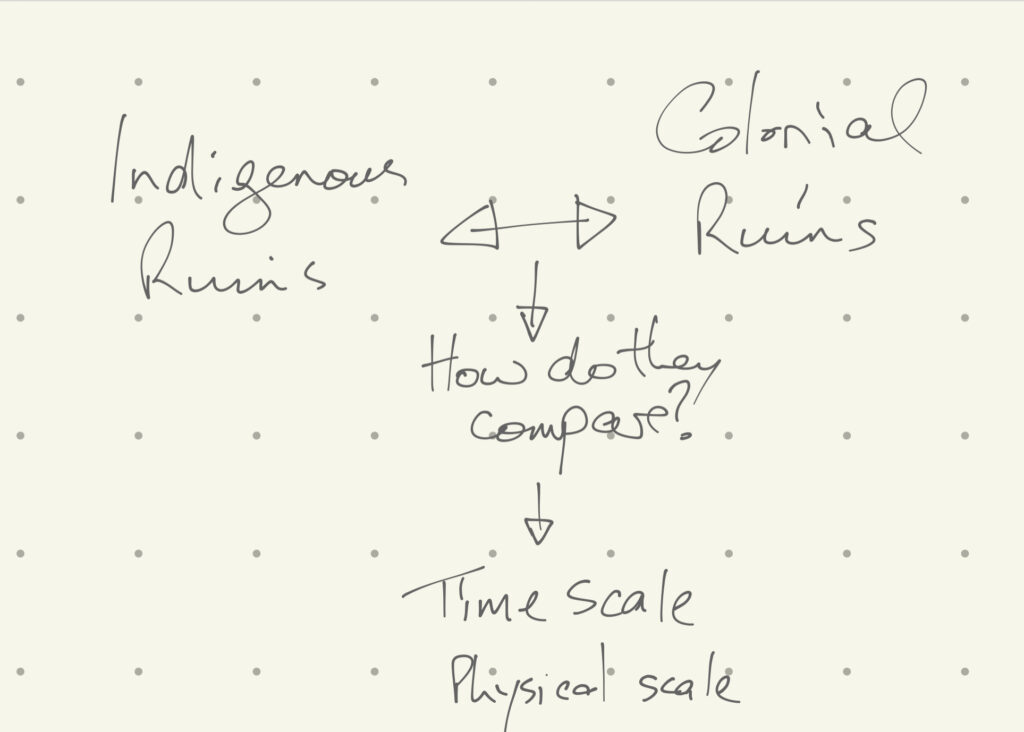

What is a relic?
Solnit writes in ‘Ruins of Memory’ that
ruins stand as reminders
our links to what came before
our guide to situating ourselves in a landscape of time
… to erase ruins is to erase the visible triggers of memory
These hills of mine tailing hills are celebrated as a representation of the heart of Broken Hill. It is as if the city of Broken Hill worships at the foot of these tailings. The ‘old’ town on the southeast of the tailings and the new city on the northwest.
A memorial to miners who have died is located on top of these mine tailings. These hills of mine tailings are relics of past practices as the majority of the mine tailings are now kept underground.
These images below created in October 2020 document the ruins/relics of the mining industry of Broken Hill in outback NSW. A town that exists only because of the mining. In what form will it exist if/when the minerals in the soil are depleted?
These images were created on a large format 5×4 film camera. Itself a relic of the past.


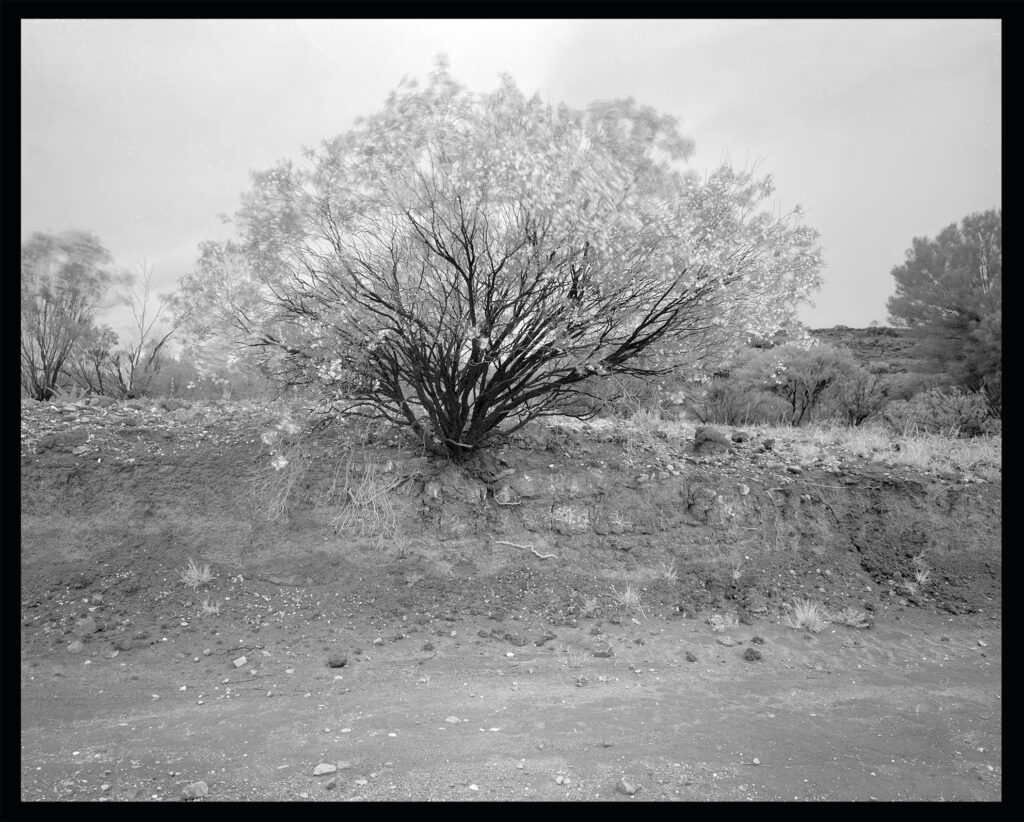
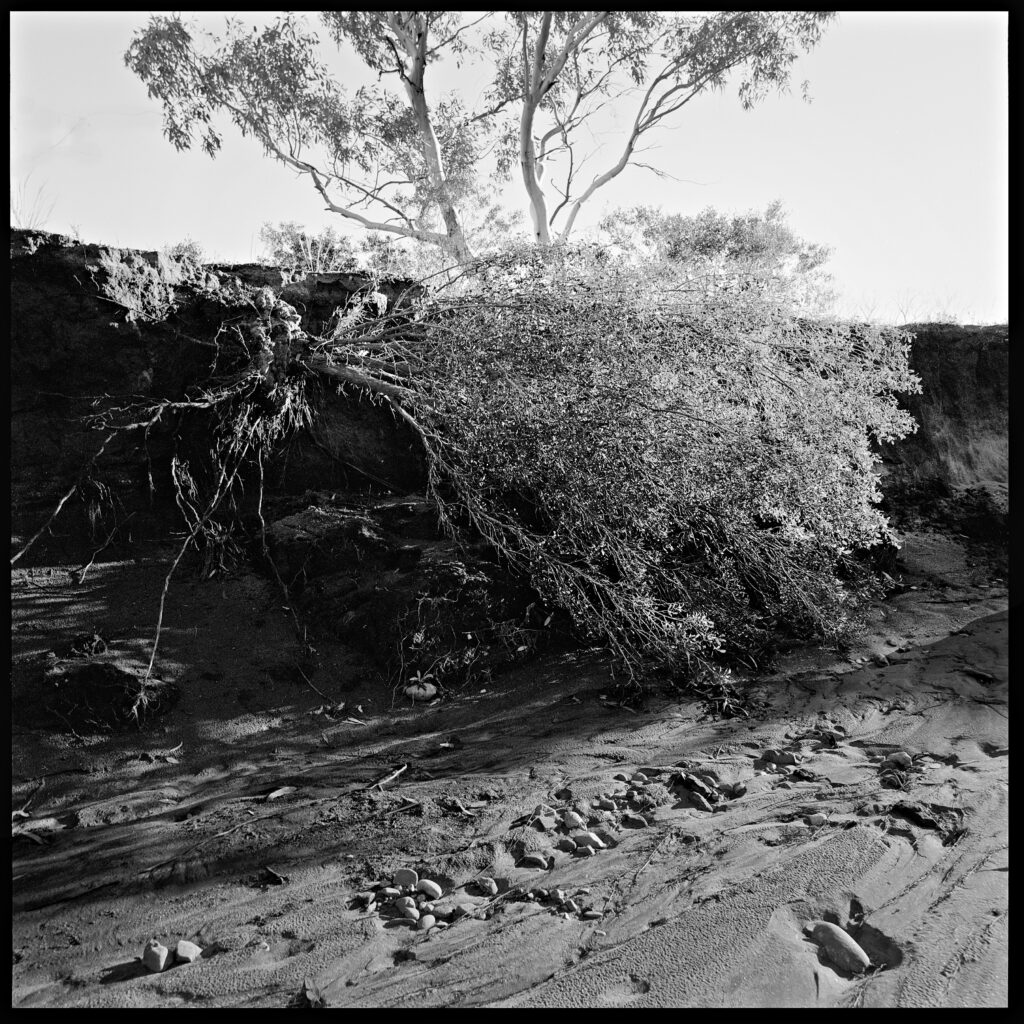
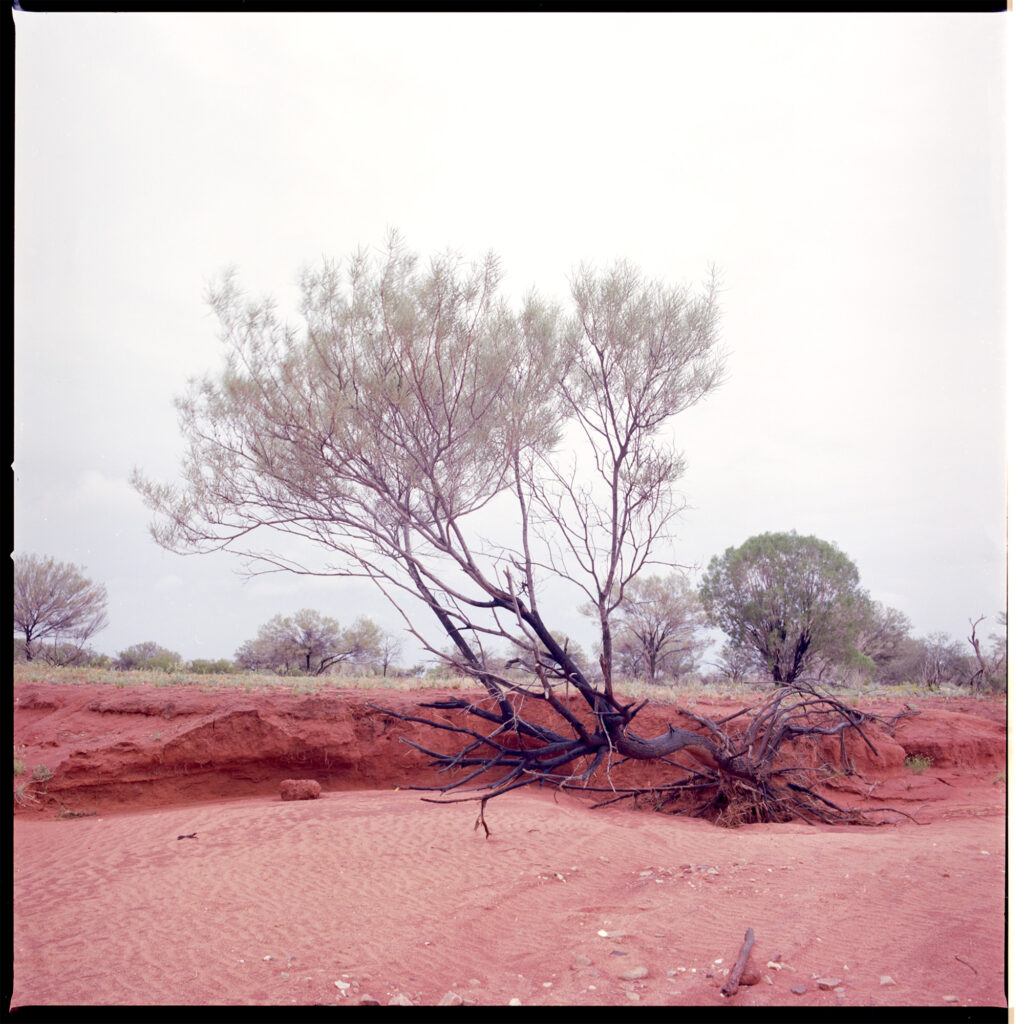
What is Design Thinking?
“Design Thinking is an iterative process in which we seek to understand the user, challenge assumptions, and redefine problems in an attempt to identify alternative strategies and solutions that might not be instantly apparent with our initial level of understanding.
At the same time, Design Thinking provides a solution-based approach to solving problems. It is a way of thinking and working as well as a collection of hands-on methods.” (Interaction Design Foundation)
While acknowledging there are different design thinking process models, they prefer the five-phase model proposed by the Hasso-Plattner Institute of Design at Stanford, which is also known as d.school. These five phases of Design Thinking, are as follows:
- Empathise – with your users
- Define – your users’ needs, their problem, and your insights
- Ideate – by challenging assumptions and creating ideas for innovative solutions
- Prototype – to start creating solutions
- Test – solutions
Their design thinking model, including literature and approach, is discussed in greater detail on the Interaction Society website.
]]>7 categories of Abstraction in Photography
Costello, D. 2018, ‘What is Abstraction in Photography’, British Journal of Aesthetics Vol. 58, No. 4, pp. 385–400.
Costello identifies and describes 7 categories of Abstraction in Photography. While I am not convinced about the titles Costello has developed as there is a suggestion of hierarchy embedded in these titles, the descriptors are really useful as are the artists Costello identifies as examples.
1. Proto Abstraction
It typically depicts recognisable objects, but framed or lit in such a way as to draw attention, when photographed, to the resulting image’s design properties.
This is achieved by a combination of bold and simplified gestalts, unusual points of view, strong lighting, close ups and other crops that direct attention to visual patterning in the image.
Given, however, that this still involves recognition of everyday objects, it clearly cannot count as abstract on the forgoing account. It is formalist, rather than abstract proper.

2. Faux Abstraction
It consists chiefly of various strategies of estrangement and defamiliarisation that isolate objects from their everyday environments or frame them in such a way as to delay or frustrate recognition of what one is looking at.
It is hard to be sure what one is looking at—though it is clear that one is looking at something—another.
A common approach in Photography
The act of cutting away the rest of the world with the image edge, fundamental too much (if not all) photography, often works to estrange and abstract simultaneously.
Jaromir Funke’s Abstract Fotos (1927–9) of complicated shadow patterns

3. Constructed faux abstraction
A variant of faux abstraction.
Comprises works in which the photographer constructs a scene that can be photographed so as to give rise to an image that seems (but only seems) to be abstract.

4. Weak Abstraction
Records the world in such a way as to no longer give rise to a clear experience of seeing “figurative content or volumentric form.
In the resulting images one sees planes in shallow space rather than volumetric forms, even if those planes consist of real objects. That one recognizes worldly objects such as walls and other planar surfaces photographed parallel to the picture plane, rather than just planes of colour, shapes or lines is what makes such images weakly abstract.
It also shows that recognizing three-dimensional objects need not involve perception of volumetric form.
Weak abstraction can collapse back into proto abstraction

5. Strong Abstraction
Like weak abstraction, strong abstraction involves straight recording of the world. Unlike weak abstraction, it records the world in such a way as to no longer give rise to an experience, even an ambiguous or liminal one, of seeing everyday objects. It is possible to take a weakly abstract work and render it strongly abstract simply by cropping away those parts of the image, such as wall edges, that enable us to recognize objects in its surface.
6. Constructed Abstraction
Involves the construction of an image from scratch
No straight recording of the world, if that is understood to be of a prior, camera-independent reality, is involved.
Artists include Wolfgang Tillmans, Walead Beshty and James Welling among others.

7. Concrete abstraction
May initially seem close to what the Gottfried Jäger calls ‘Concrete Photography.’ On Jäger’s account, this foregrounds artefacts of photographic processes or events, but has no denotative content. It takes the medium, processes, materials and mechanisms of photography as both the means and end.
]]>Amano writing a summary of the exhibition Bauhaus and Photography (Feb 19th 2019) states Moholy-Nagy at the Bauhaus was interested in a pioneering attitude and asked where photography might be heading.
He helped liberate “photography from its commitment to the pure reproduction of reality” and wrote “photography is the first means of giving tangible shape to light … in a … almost abstract form.” Moholy-Nagy questioned the effects of capitalism but was fascinated by technology in which he saw great potential.
(https://amanostudy.wordpress.com/2019/02/16/bauhaus-and-photography/)
Reflective practice performed in a structured and critical manner can guide the creative practitioner to think about their projects in ways that supports knowledge transfer.
The video below outlines the fundamental theory behind reflective practice for the creative practitioner.
The British Journal of Aesthetics, Volume 58, Issue 4, October 2018, Pages 385–400
An interesting article on Photography and Abstraction. Costello outlines some key considerations and definitions relating to:
- Abstraction in Art and Photography
- Photography itself
- describes a taxonomy of different categories of abstraction
Paper Abstract
There is confusion about what counts as abstraction in photography: art theorists class very different kinds of photographs as abstract, and common philosophical views of photography, if true, should cause us to doubt their very possibility. I address two questions here: ‘What is Abstraction?’ and ‘What is Abstraction in Photography?’ To the answer the second, I briefly consider a third: ‘What is Photography?’ so that the resulting account is not undermined by a poor theory of photography. In answer to my target question, I outline a schematic (and non-exhaustive) typology of kinds of work generically typed as ‘abstract’ in order to bring out some differences between them. I distinguish ‘proto’, ‘faux’, ‘constructed faux’, ‘weak’, ‘strong’, ‘constructed’ and ‘concrete’ abstraction, although the differences between them are not always clear-cut and there is room for debate about borderline cases. My goal is not to resolve all such cases, but to show: (i) that there is a range of broadly identifiable kinds of abstraction in photography; (ii) that images can be abstract in a variety of ways and for a variety of reasons; and (iii) why certain images are not abstract, despite being widely typed as such.
My Notes from Costello’s paper
Abstraction
- In art theory, ‘abstract’ tends to be used as a contrast category to ‘”figurative’ and means essentially non-depictive.
- A picture is abstract when one can no longer see any recognizably three-dimensional objects in it.
- Pictures that are abstract in this sense may still trigger a perception of depth (as when one shape or colour seems to float in front of, or recede behind, or be seen through, another) but cannot prompt us to see three-dimensional objects in their surfaces, on pain on collapsing back into depiction.
- Clement Greenburg (1993) indicates Recognition of everyday three-dimensional objects is sufficient to cue perception of such space, and is as such incompatible with abstraction proper
- Abstract pictures may facilitate an experience of seeing relations of depth, overlap and transparency that are not literally present (but not everyday objects) as ‘non-veridical seeing without recognition of volumetric form’ (Newall 2011). Perception of volumetric form, so construed, would mark the difference, in Wollheim’s terms, between ‘abstract’ and ‘”figurative’ seeing-in.11
- Abstract painting is twofold in a distinctive sense; it permits limited perception of depth and spatial relations between forms, planes and lines … but rules out perception of three-dimensional objects on pain of collapsing back into “figuration … or depiction.
- Abstraction in art is typically eliminative or reductive: it removes features deemed inessential to something’s continued existence as an entity of a given kind p399
Photography
- key component of photography “is the role of light in generating the image”
- an item is a photograph if and only if it is an image that is a product of a photographic process, where a photographic process includes (1) a photographic event as well as (2) processes for the production of images (drawn from Dominic McIver Lopes 2012).
- An item is a photograph if and only if it is an image that is a product of (1) a photographic event and (2) processes for the production of images that (3*) generally ensure belief-independent feature-tracking.
Photography & Abstraction
- Gottfried Jäger, on such questions, by presenting photographic abstraction, in broadly modernist terms, as a reduction to essence
Costello’s Abstraction taxonomy is described in this additional post.
]]>I was looking at the work of Australian photographers like Max Pam, Carol Jerrems, David Moore, Max Dupain, and Emmanuel Angelicas to name a few. Looking internationally, the work of Harry Callahan and Joel Meyerowitz were also a big influence. It was Callahans work with shop fronts and windows that particularly resonated with me at the time (see my Callahan post).
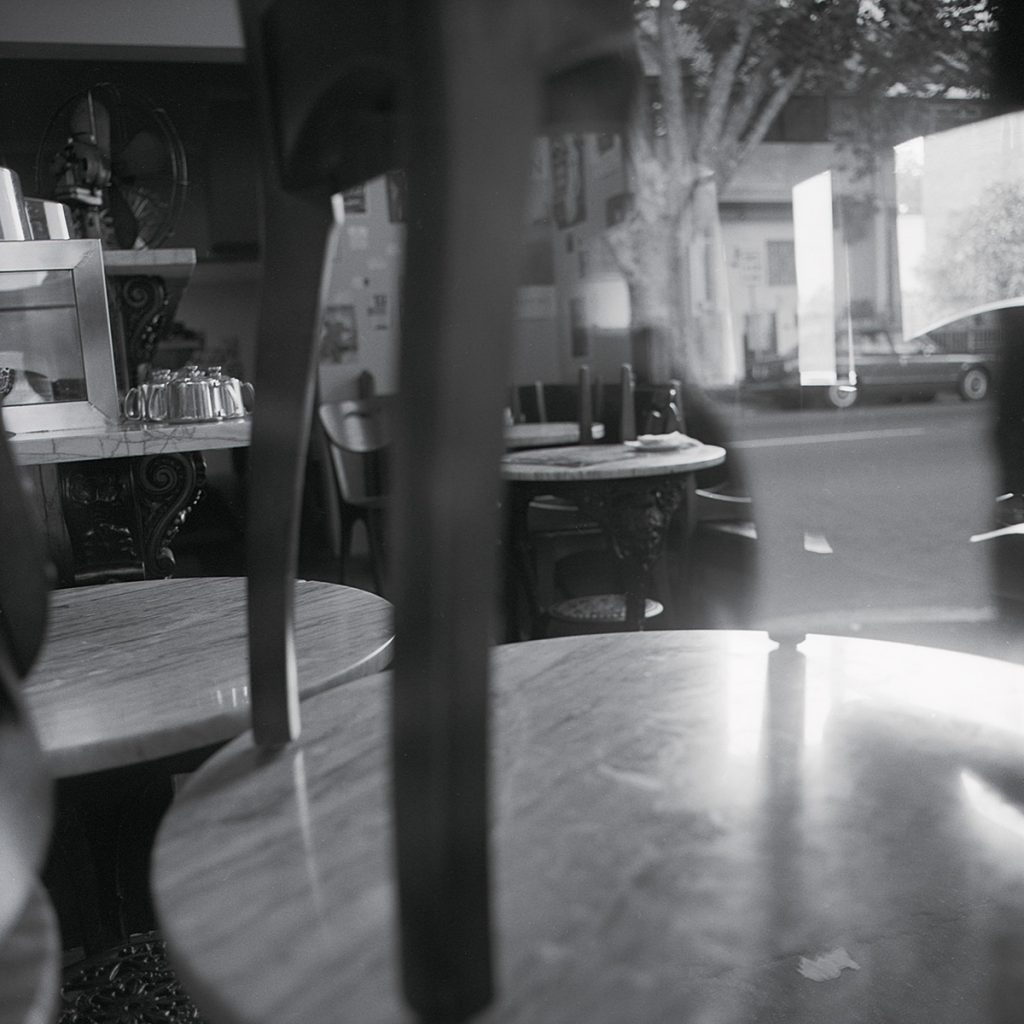
I found that I got a stronger window reflection if the light (direct sun) was on the opposite side of the street, so I would work the shadow side of the street. To capture the other side of the street I would return at a time of day when the light had shifted across. Generally this meant coming back in the afternoon.
I found colour did not suit. The nature of black & white film was a better approach as it emphasised the abstraction qualities I was looking for. Titling the horizon further contributed to the abstraction. I was looking to work in the space between the recognisable elements that located the work on the street, and engaging with the more abstract forms present. Moving the camera in close also was an important aspect of my approach. Often the lens was right to the glass of the window.
Most of the Sydney work was shot using a Mamiya 330 twin lens with a wide angle. The waist level view finder was important feature of the camera, which helped me compose the image. Shooting full frame was important to me. I would work the camera until I was happy with the composition. The nature of the wide angle was another aspect I sought to make the most of. The optics of the wide angle meant the positioning of the camera off level exaggerated the titling effect.
I also learnt to use my own body as a means to impact on what was reflected and what was not. My body, which worked as a non-reflective element, would cut a hole in the window reflection. I could use this to highlight specific elements of the scene.
By the time I moved to working the streets in Melbourne I had shifted to a Hasselblad. Such a beautiful camera to use. With the shift to a single lens camera, I no longer had to contend with the parallex error associated with the twin lens!
This work bares witness ….
]]>